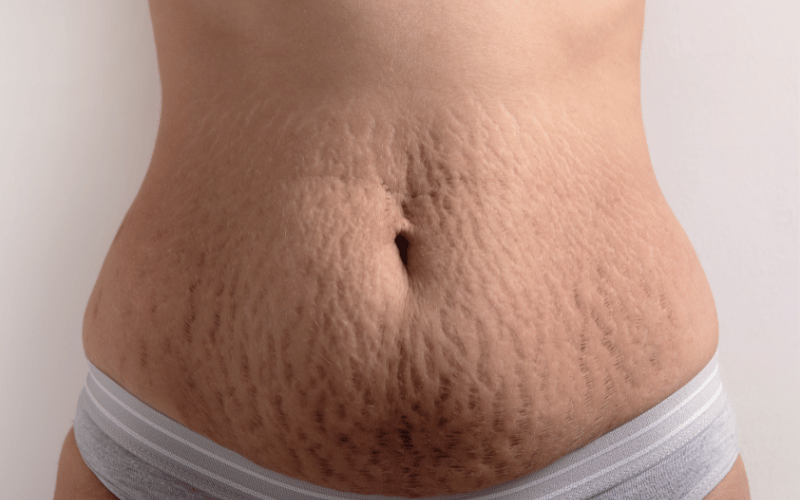Symptom 2: Purple or Pink Stretch Marks

Stretch marks are a natural part of many people’s skin landscapes, especially after periods of rapid growth or weight gain. However, Cushing’s syndrome introduces a unique twist to these marks. Known medically as striae, individuals with this condition often witness the appearance of wide, vivid bands of purple or pink stretch marks. These aren’t your typical silvery-white lines but are much more pronounced and conspicuous, predominantly gracing the abdomen, thighs, arms, and breasts.
At its core, the reason for these pronounced marks boils down to cortisol’s impact on skin health. An abundance of cortisol weakens the skin’s elasticity and the supportive tissues underneath. So, as the skin stretches due to factors like the aforementioned rapid weight gain, it’s less resistant to the tearing that occurs beneath its surface. When you couple this with the weakened blood vessels, courtesy of excessive cortisol, these tears manifest as vivid purple or pink marks on the skin.
While stretch marks can often be a cosmetic concern, when associated with Cushing’s syndrome, they highlight a deeper hormonal imbalance in the body. They serve as visible proof of the skin’s reduced elasticity and resilience. It’s not just about the skin either; it’s a reflection of how the body’s tissues are coping (or rather, not coping) with the excessive cortisol levels.
Many people get stretch marks. Puberty, pregnancy, or even regular weight fluctuations can cause them. However, the stretch marks of Cushing’s syndrome are distinct. They’re often wider, more colorful, and appear in regions that aren’t typically affected by regular stretch marks. Monitoring their evolution in terms of development, color, and location can be a crucial step in identifying an underlying condition.
The presence of these vivid striae isn’t just a skin-deep problem. They signify the skin’s inability to heal and adapt as efficiently as it should. While they might be of aesthetic concern, it’s vital to recognize them as an indicator of a possible hormonal disorder that demands attention and care. (2)